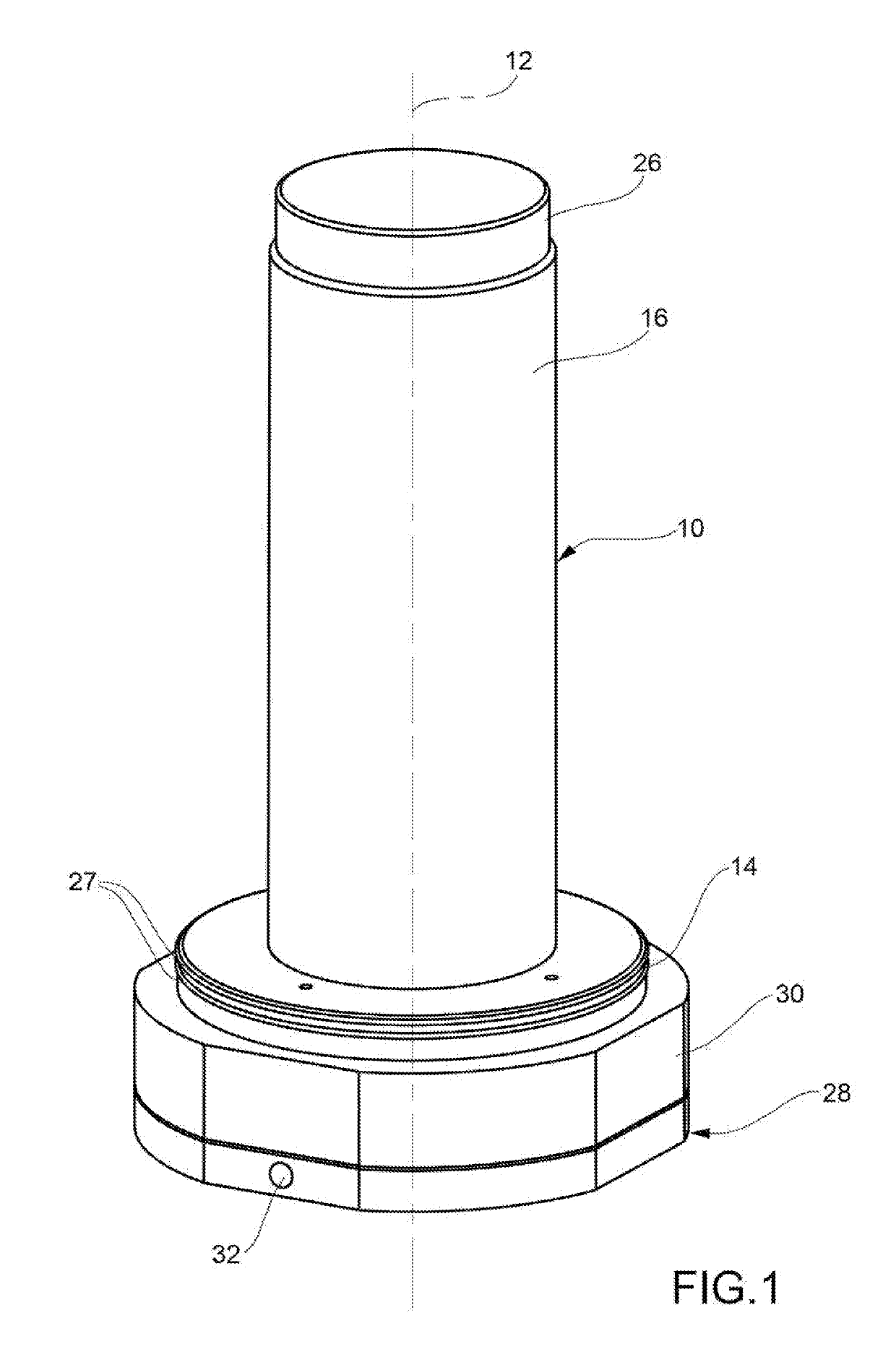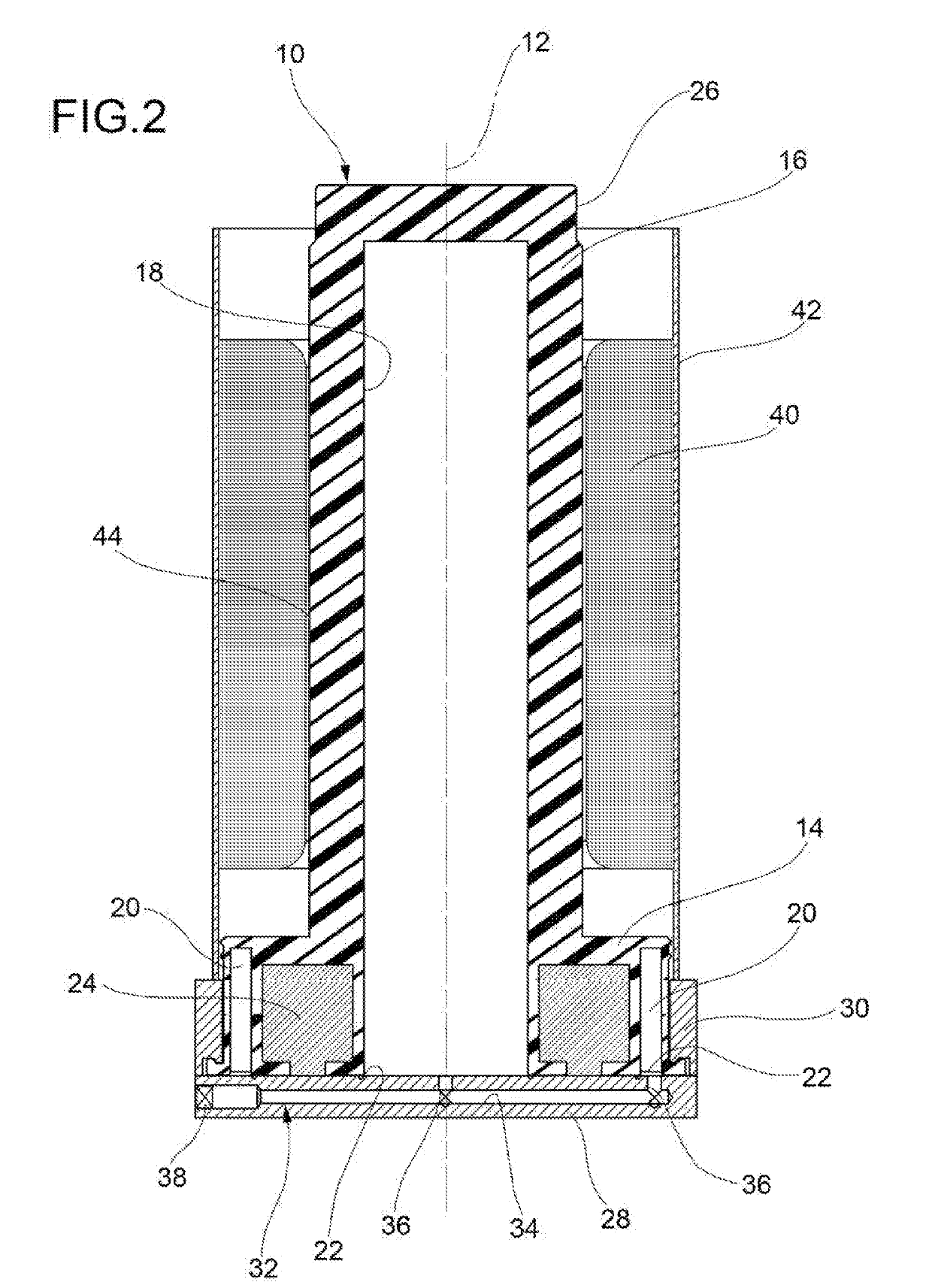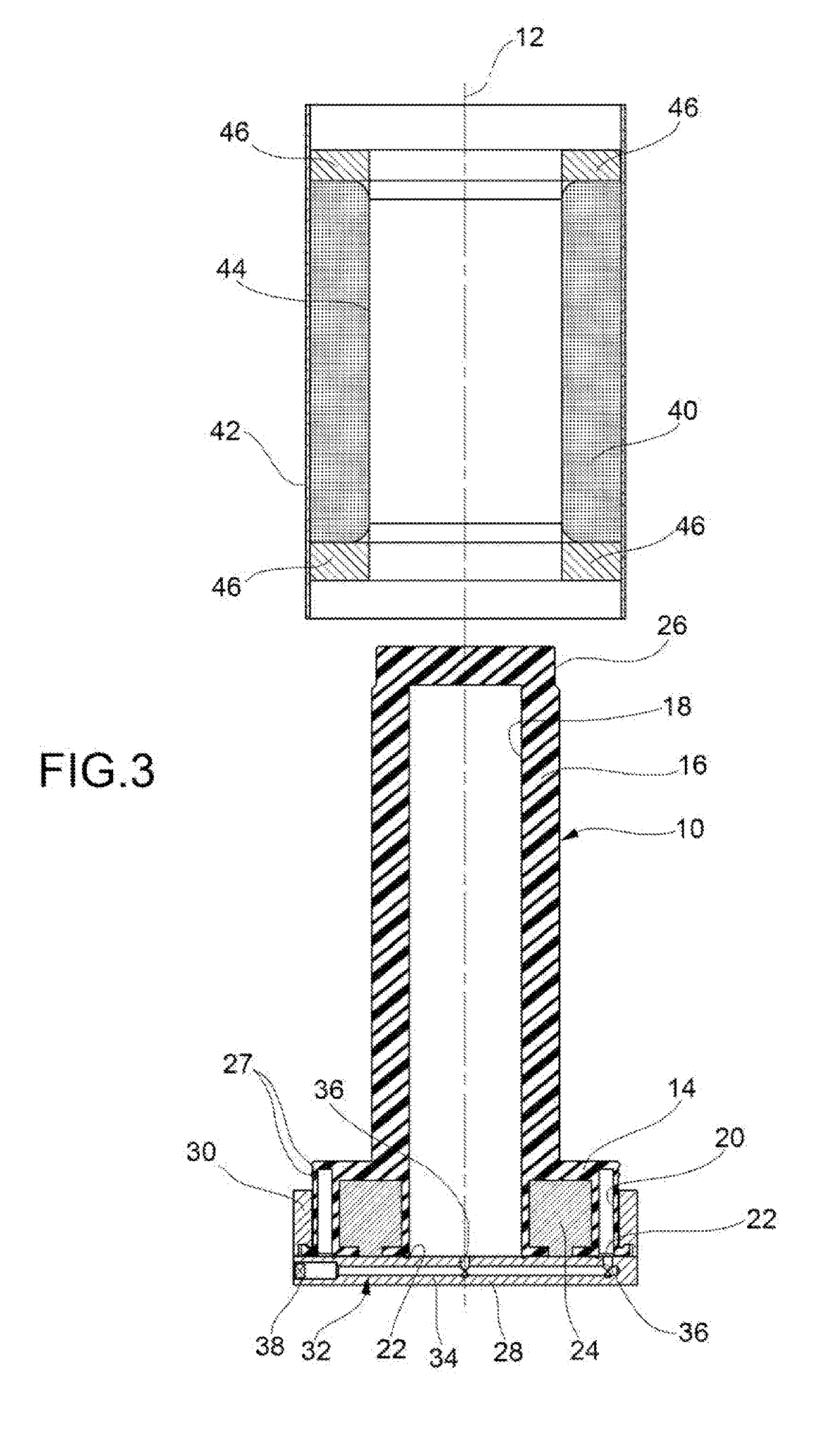Process for over-moulding an outer stator
- Summary
- Abstract
- Description
- Claims
- Application Information
AI Technical Summary
Benefits of technology
Problems solved by technology
Method used
Image
Examples
Embodiment Construction
[0014]A core 10 for undertaking a resin coating method is configured symmetrically (FIG. 1) with respect to a central longitudinal axis 12 and has a disc-shaped lower portion 14 and an upper cylindrical portion 16 that protrudes from a central zone of a surface facing upward of the lower portion 14. Both portions 14 and 16 have circular cross-sections.
[0015]The core 10 has an elastic wall, for example of silicone rubber, which encloses a first inner chamber 18 of cylindrical shape and with a circular cross-section, arranged centrally and extending through the upper and lower portions 14, 16, and a second inner chamber 20 having a ring shape and extending in a peripheral region of the lower portion 14 coaxially outside the lower end of the first chamber 18. Chambers 18, 20 respectively have openings 22 toward the lower side.
[0016]The wall of the lower portion 16 also surrounds a metal ring 24 arranged coaxially within the second chamber 20 and the outside of the lower end of the firs...
PUM
| Property | Measurement | Unit |
|---|---|---|
| Time | aaaaa | aaaaa |
| Shape | aaaaa | aaaaa |
Abstract
Description
Claims
Application Information
 Login to View More
Login to View More - R&D
- Intellectual Property
- Life Sciences
- Materials
- Tech Scout
- Unparalleled Data Quality
- Higher Quality Content
- 60% Fewer Hallucinations
Browse by: Latest US Patents, China's latest patents, Technical Efficacy Thesaurus, Application Domain, Technology Topic, Popular Technical Reports.
© 2025 PatSnap. All rights reserved.Legal|Privacy policy|Modern Slavery Act Transparency Statement|Sitemap|About US| Contact US: help@patsnap.com



